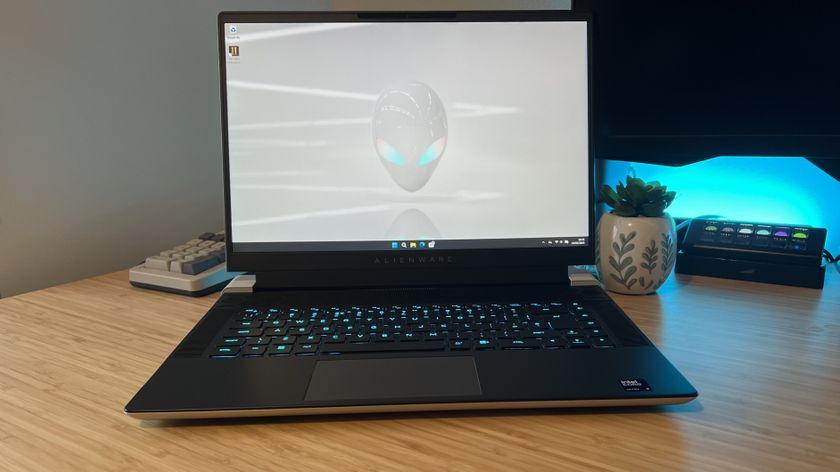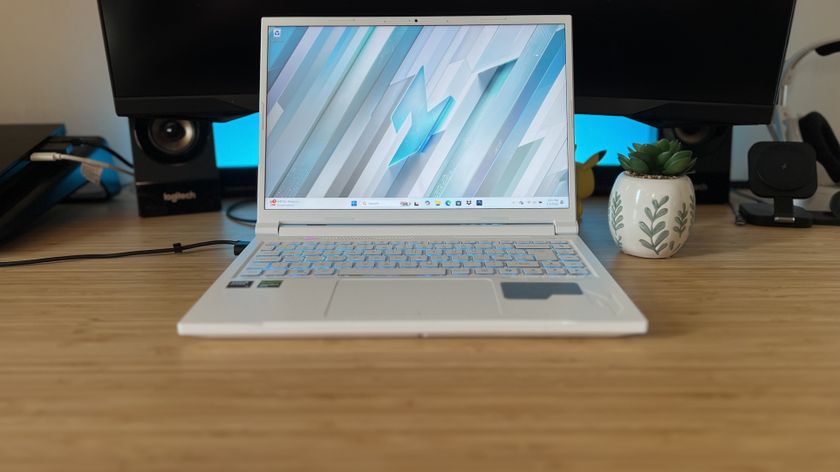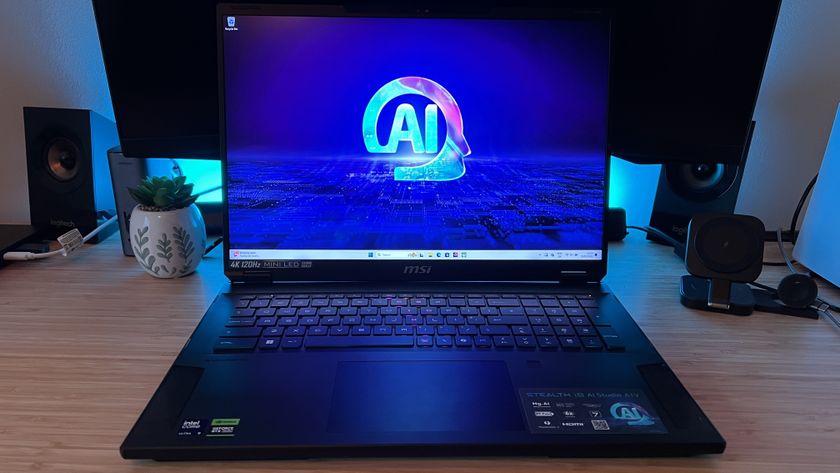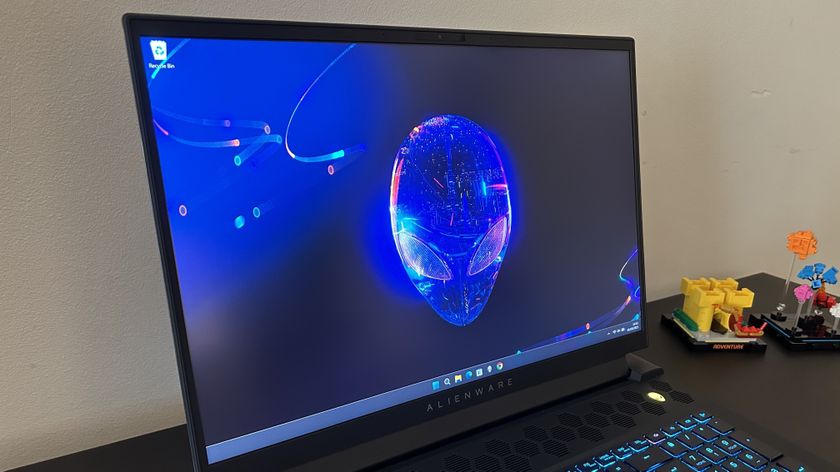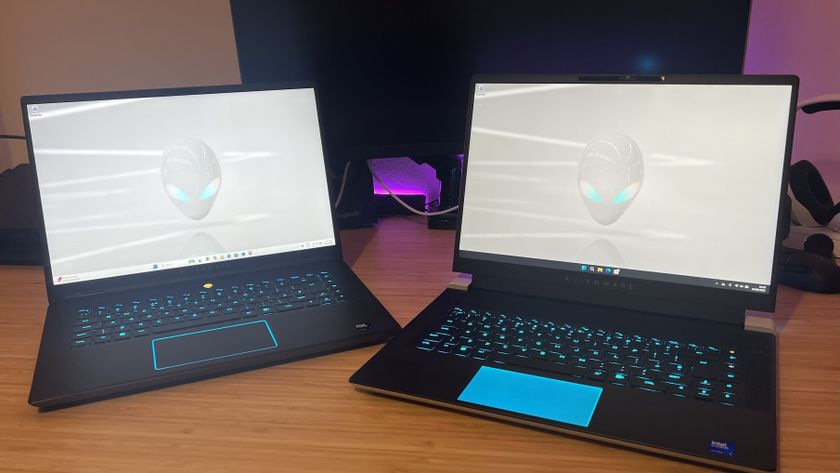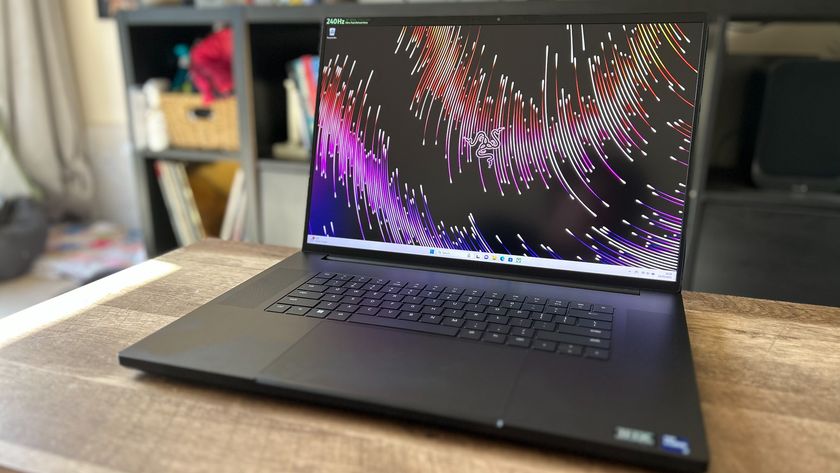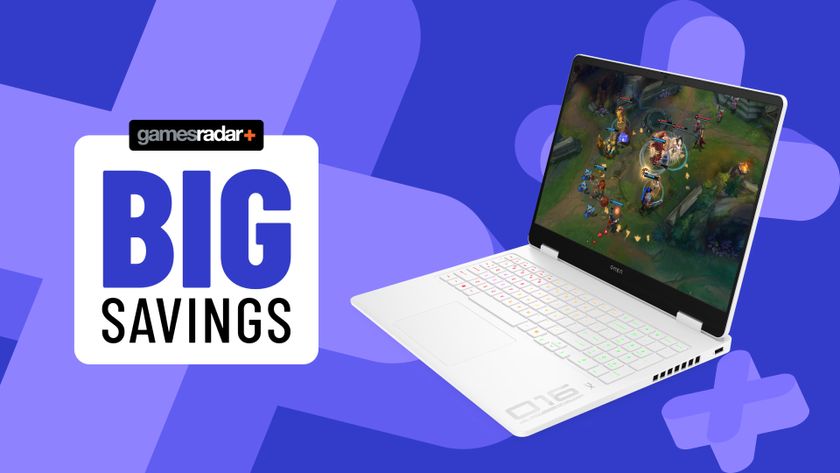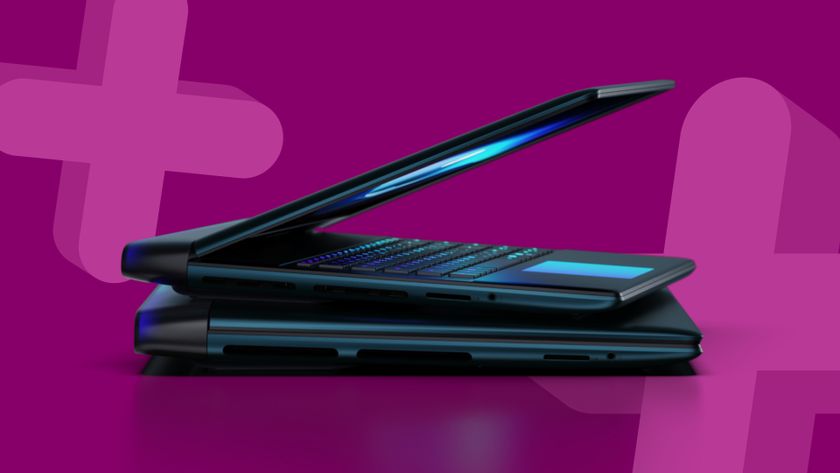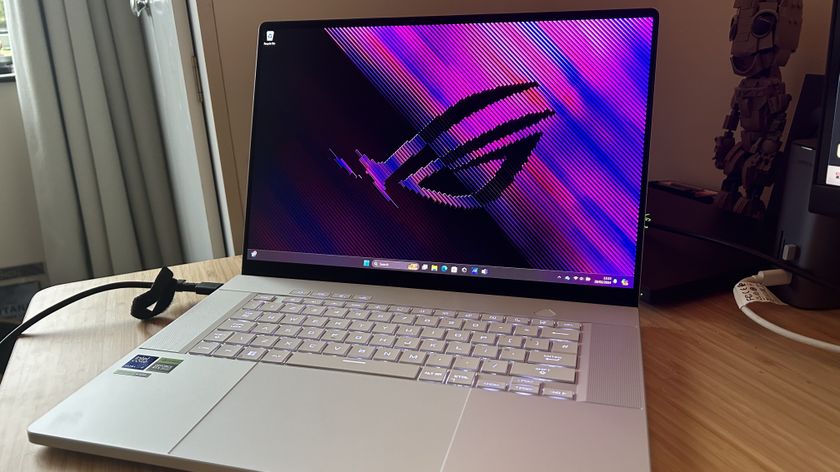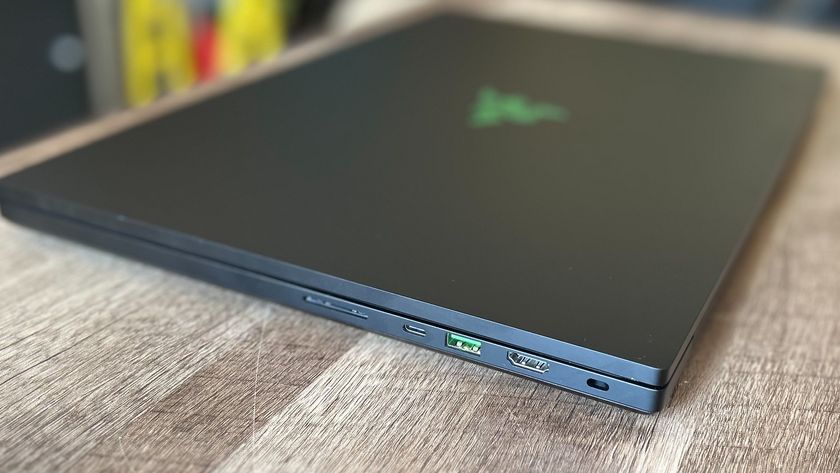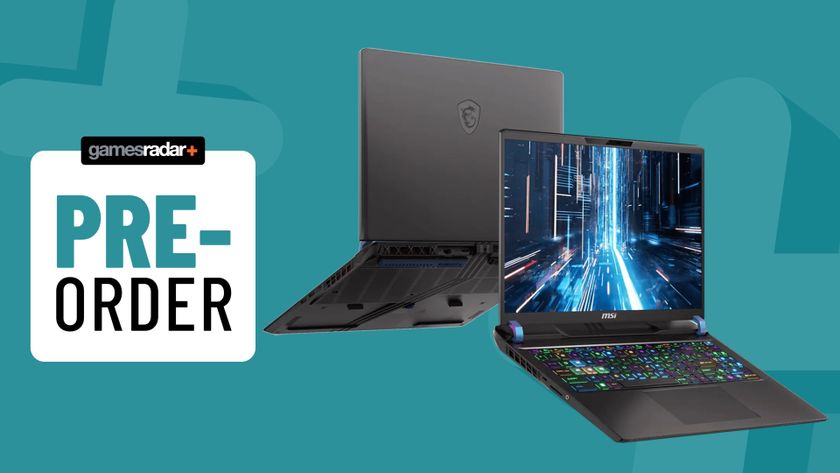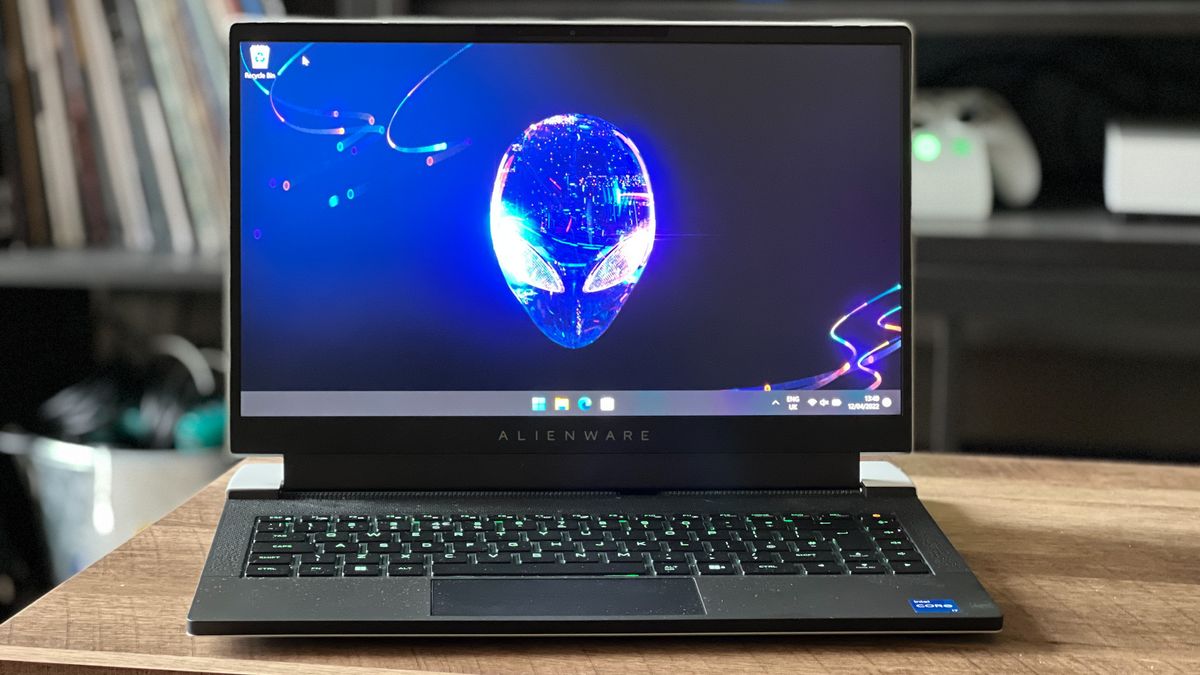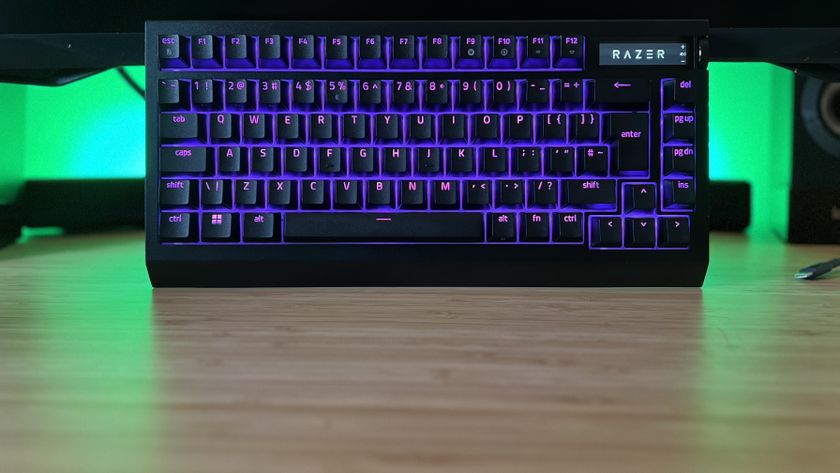12DOVE Verdict
In a budget category, the Alienware X14 is one of the most luxurious laptops actually worth buying. However, the limits to this feature-set and configuration options mean the story's a little more difficult to tell further up the price scale.
Pros
- +
Super slimline form factor
- +
Impressive performance
- +
More affordable than other Alienware rigs
- +
Sleek aesthetic
Cons
- -
Limited configurations available
- -
Increased depth leaves larger footprint
- -
Matte display can dull colors
Why you can trust 12DOVE
The Alienware x14 shrinks Dell's latest X-Series design to bring the brand's first 14-incher to the market. The super slimline machine impresses in its form factor, offering a luxury experience at a more affordable (relatively speaking, of course - this is still Alienware) price point. Though limited in its configuration options, the Alienware X14 feels like it earns its place on the mid-range shelf but will appeal more to those after a premium feel than those chasing framerates.
Of course, there's some stiff competition when it comes to the best gaming laptops in the 14-inch category. The Razer Blade 14 manages to pack some seriously impressive components into its tiny form factor, and the Asus ROG Zephyrus G14 offers two similar price points with AMD components. By contrast, the Alienware x14 occupies a 'budget' category that's very much relative to the brand's high-end price range. An RTX 3050 configuration with an i5-12500H processor will run you $1,499.99, meanwhile the RTX 3060 rig we tested comes in at $1,949.
That means the x14 has to work hard to secure its place among the best Alienware laptops, so we put the miniature rig to the test over the course of two weeks' work and play.
Design
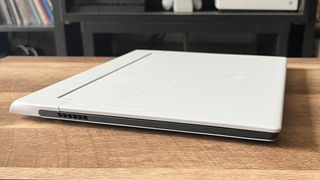
The Alienware x14 offers that same sleek design as its larger x15 and x17 siblings. However, this is the thinnest gaming laptop I've ever used. Measuring at 0.57-inches (14.4mm), this rig sits particularly well in profile and feels almost impossible in person. You've still got to fit all those components in, though, so the X14 still weighs in at around 4lbs (1.8kg), give or take for your configuration. That's in line with the rest of the market, so don't expect to be throwing this machine around one-handed.
That slimline design is partly achieved by removing the need for a full hinge. The dual-torque hinge at the back of the rig allows the screen to move by sliding back and forth within the chassis. That leaves you with plenty more room under the hood (and that classic slimline design) but does also mean that the overall system is deeper as a result. There's a lot of space behind the screen, which means it's far longer than other machines - taking up more space than my 15.6-inch Asus TUF Dash F15 on the desk.
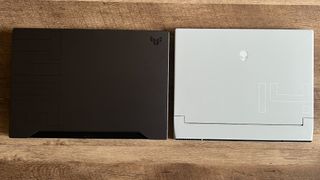
In the hands, though, the Alienware x14 oozes quality. That futuristic design doesn't feel as overtly ostentatious in a 14-inch form factor, but will still certainly make itself known. Alienware has long produced some of the best-looking gaming laptops on the market, and the x14 makes no sacrifices here. CNC aluminium and magnesium offer up a solid base, with a lick of 'Lunar Light' white on the back panel and underside.
I was pleased to find that the white of this particular colorway is less stark than images make it appear. Instead, it holds more of a gray hue that allows the RGB to shine without appearing cheap. However, you'll need to keep that cloth ready - dust shows up particularly quickly on this surface, and the softer matte design could easily show scuffs and scratches.
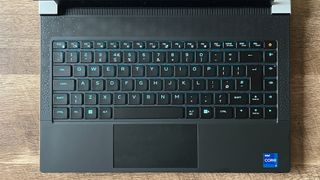
The keyboard and trackpad feel comfortable enough to use and are surrounded by grills on three sides. The shorter base means that I needed to adjust my playing angle a little to ensure my palms didn't sit awkwardly over the lip of the machine itself, but it was easy enough to slide into a comfortable position and stay there.
Features
Processor: Intel Core i7-12700H
Graphics: Nvidia GeForce RTX 3060
Memory: 16GB LPDDR5 RAM
Display: 14-inch, 144Hz
Resolution: 1920 x 1080 (Full HD)
Storage: 1TB PCIe NVMe M.2 SSD
Ports: 1x USB Type-A, 1x USB Type-C, 2x USB Type-C / Thunderbolt, 3.5mm, microSD
Connectivity: Wi-Fi 6E and Bluetooth 5.2
OS: Windows 11 Home 64-bit
Weight: 4lbs (1.8kg)
One of the biggest features commonly associated with the Alienware x14 is that new cooling system. The vapor chamber cooling and Smart Fan control under the hood certainly go a long way to keeping this rig from dangerous temperatures, but once past the point of no return you're still going to be shifting this machine around to stay comfortable. More demanding runs like Doom Eternal and Red Dead Redemption certainly saw those temperatures climb in the same way we would expect to see in any 14-inch gaming laptop. However, it did take a lot more to reach those heights.
It's still a nice feature to find in one of Alienware's more conservatively priced machines and will satisfy all ends of this rig's price spectrum. Unfortunately, the same can't be said of the display. All Alienware x14 laptops (yes, even the $2,199.99 configuration) ship with the same 1080p 144Hz display. At $1,500 this is no biggie, and the screen actually offers some nice value in its anti-glare texture if you're browsing at this price point. However, once you're spending over $2,000 those specs start to look a little suspect - especially considering the matte cover that makes this rig so useable in so many different lighting environments also leaves colors a little dampened.
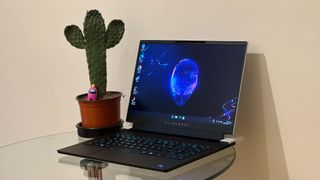
The same story can be told about those configurations themselves. At the bottom end of the scale everything matches up, you're getting a premium build quality with a 12th generation i5 or i7 processor, an RTX 3050 GPU, 16GB DDR5 RAM, and a 512GB SSD. That's good going considering the luxurious nature of this chassis. However, there just isn't room to scale up here.
The most you can push the Alienware X14 to is an RTX 3060 GPU with an i7-12700H processor (granted, with 32GB DDR5 RAM and a 2TB SSD). At well over $2,000, however, those components just don't feel competitive enough - especially when the Razer Blade 14 can see you get up to RTX 3080 if you're willing to invest much more into the final price.
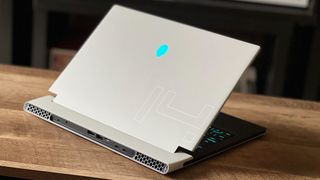
The Alienware x14 features all of its ports at the back of the rig, with one charging USB-C port and two additional USB-C / Thunderbolt 4 ports, HDMI out, one USB-A, a microSD card reader, and a 3.5mm headphone jack. That singular USB-A port did prove a problem when I attempted to integrate the x14 into my existing setup. My mouse and keyboard both require USB-A ports, and I often use an additional webcam through a third port as well. I was disappointed to find just a single USB-A here, as many PC gaming accessories haven't taken the leap to USB-C just yet. That means you'll have to invest in a separate dock to keep all your gear plugged in if you're using this rig on a desk.
However, that USB-C charging made my life particularly easy. I like to keep a static rig set up on my desk, but occasionally use the laptop powering that rig elsewhere around the house. Being able to use a 100W USB-C charger downstairs and keep the supplied 130W charger upstairs was a godsend, and it's easy to see how this flexibility will come in handy for anyone looking to take their rig on the go.
Performance
The Alienware x14's feature set makes the most sense if you're browsing the bottom end of its price range. However, its performance will still delight even further up the scale. The RTX 3060 GPU in our test unit is a lower mid-range model, but paired with that 12th generation Intel processor and some excellent engineering under the hood, the x14 manages to bleed as much graphical power out of it as possible.
Fire Strike: 17,408
Time Spy: 7,807
PC Mark 10: 7,123
Cinebench: (Multi) - 13,562
Crystal Disk Mark: 6929.14 MB/s read; 5203.87 MB/s write
The Division 2: High - 90fps; Ultra - 68fps
Metro Exodus: High - 65fps; RTX - 47fps
Red Dead Redemption 2: High - 55fps; Ultra - 52fps
Total War: Three Kingdoms: High - 83fps; Ultra - 58fps
Shadow of the Tomb Raider: High - 116fps; Highest - 108fps
Of course, the Alienware x14 is going to be outperformed by machines running RTX 3070 and RTX 3080 GPUs, but I was actually pleasantly surprised by the results here. The smaller form factor hasn't had too much of an impact on performance in The Division 2 (still reaching well over 60fps on Ultra settings), and Total War: Three Kingdoms. Plus, the Nvidia optimized Shadow of the Tomb Raider still flies here, even on Highest settings.
Sure, heavier titles like Red Dead Redemption did struggle - but many 14-inch machines would be grateful to see that 52fps average on Ultra here. Similarly, while we wouldn't recommend switching to the 47fps RTX mode on Metro Exodus, you're getting some solid frames on High.
Of course, tweaking those settings just a little in the right ways can really open this machine up to some silky smooth gameplay. I kicked Doom Eternal down a couple of notches and experienced some of the slickest gameplay in this form factor yet.
The keyboard itself is snappy and light, with a reduced 1.2mm travel distance to keep things slimline. I was impressed with the tightness of these keys, with a solid tactile feel to them that can't be taken for granted in smaller laptop keyboards. The dedicated volume buttons running down the right-hand side also came in handy as well.
Should you buy the Alienware x14?
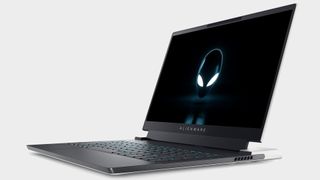
The Alienware x14 easily impresses in its design, build quality, and performance. This is a 14-inch laptop that manages to make its small design work particularly hard to bridge the mid-range gap that many rigs find themselves stuck in. However, we would recommend taking a look at the RTX 3050 / RTX 3050 Ti configurations to maximise your value for money here.
The 1080p 144Hz display is a little too limiting to justify a $2,000+ price point on the higher-end RTX 3060 models. However, the materials, engineering, and form factor here will make it a worthwhile purchase if you don't need to push Ultra settings and would prefer that super flexible chassis. After all, there's no point paying for triple-figure framerates if it doesn't fit into your life.
This is an undeniably premium machine and one that has earned its spot among the best on the market, especially if you're looking for a more budget-friendly graphics card.
How we tested the Alienware x14
I ran the Alienware x14 as my daily driver for both work and play over the course of two weeks. During that time, I tested the laptop's performance using a combination of in-game benchmarking software, industry-standard tests, and everyday play. I ran GPU benchmarks on Red Dead Redemption 2, Metro Exodus, The Division 2, Total War: Three Kingdoms, and Shadow of the Tomb Raider while judging everyday use while playing Doom Eternal, Planet Coaster, and Apex Legends.
For more on how we make our recommendations, take a look at our full 12DOVE Hardware Policy. We're also showing you exactly how we test gaming laptops in more detail as well.
We're also rounding up all the best Razer laptops if you're looking for more inspiration, as well as the latest Alienware laptop deals and plenty more cheap gaming laptop deals to boot.

Managing Editor of Hardware at 12DOVE, I originally landed in hardware at our sister site TechRadar before moving over to GamesRadar. In between, I've written for Tom’s Guide, Wireframe, The Indie Game Website and That Video Game Blog, covering everything from the PS5 launch to the Apple Pencil. Now, i'm focused on Nintendo Switch, gaming laptops (and the keyboards, headsets and mice that come with them), PS5, and trying to find the perfect projector.
